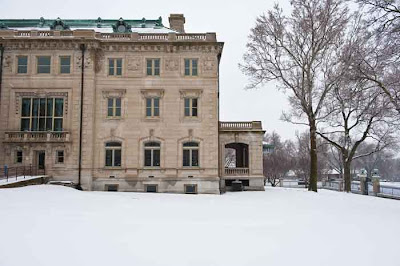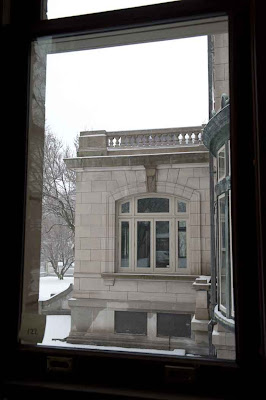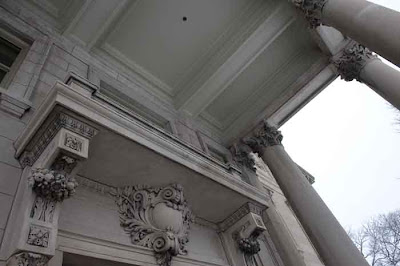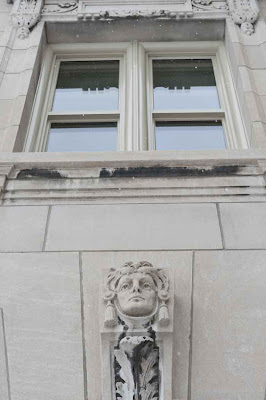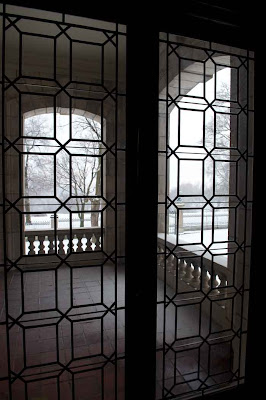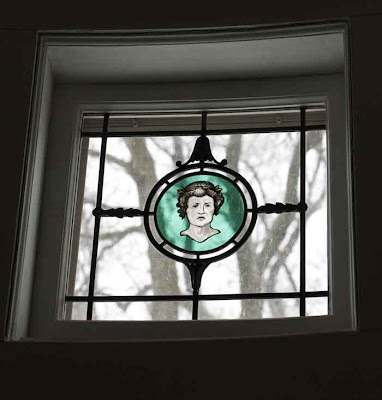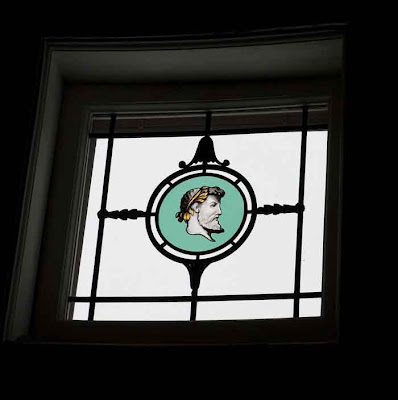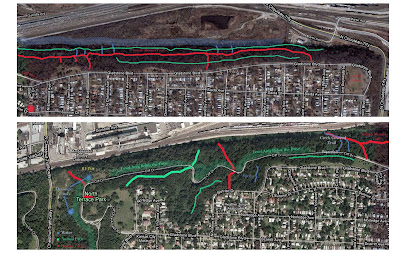 The home has 70 rooms and when the Longs lived there a staff of 24... mostly Scandinavian and German servants. When the building was converted to a public space as a museum, much of the interior was gutted.... walls removed.... for exhibit space. The process has begun to restore it to pre-museum condition.
The home has 70 rooms and when the Longs lived there a staff of 24... mostly Scandinavian and German servants. When the building was converted to a public space as a museum, much of the interior was gutted.... walls removed.... for exhibit space. The process has begun to restore it to pre-museum condition.  The house sits on limestone bedrock with a steel beam and concrete foundation. In one-hundred years there has been no settling. Interior walls are 18-24 inches thick throughout the house. Note the walls below are three courses of bricks thick.
The house sits on limestone bedrock with a steel beam and concrete foundation. In one-hundred years there has been no settling. Interior walls are 18-24 inches thick throughout the house. Note the walls below are three courses of bricks thick.
 Interior walls were removed and where they used to be can still be seen on the floors. New HVAC and electrical is being installed now. All new windows went in over the summer.
Interior walls were removed and where they used to be can still be seen on the floors. New HVAC and electrical is being installed now. All new windows went in over the summer.


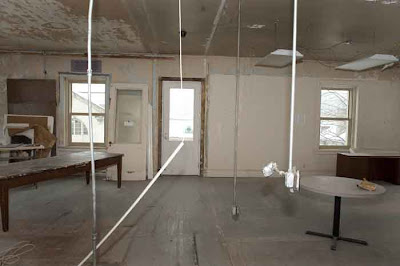 Looking north the Carriage House is visible through the windows. The door opens out on a balcony.
Looking north the Carriage House is visible through the windows. The door opens out on a balcony.
 One of the new doors that opens onto the front balcony of the house.
One of the new doors that opens onto the front balcony of the house. Most of the fireplace mantels are gone.... either taken by the family for use elsewhere or sold and cut out during a two-day auction after Mr. Longs' death in 1934.
Most of the fireplace mantels are gone.... either taken by the family for use elsewhere or sold and cut out during a two-day auction after Mr. Longs' death in 1934. 

 A large bathroom on the second floor... only the tiled walls give the use of the space away.
A large bathroom on the second floor... only the tiled walls give the use of the space away. Above, one of the few surviving mantels in the upstairs.
Above, one of the few surviving mantels in the upstairs. View out of the front bedroom windows. Shown is the Edward Steven's home, built in 1902. Mrs. Stevens was the only person R.A. Long approached about buying her property who refused to sell. He wanted to either move the house or remove the house to improve the view.
View out of the front bedroom windows. Shown is the Edward Steven's home, built in 1902. Mrs. Stevens was the only person R.A. Long approached about buying her property who refused to sell. He wanted to either move the house or remove the house to improve the view. Above... old time visitors to the Museum will remember the Igloo. You can see a outline of where is was in this room. It was very popular amongst young visitors (older ones too) because it was interesting and because it was the only air-conditioned room in the Museum.
Above... old time visitors to the Museum will remember the Igloo. You can see a outline of where is was in this room. It was very popular amongst young visitors (older ones too) because it was interesting and because it was the only air-conditioned room in the Museum. Not a bad view. Looking west over Cliff Drive during last Sundays' snow.
Not a bad view. Looking west over Cliff Drive during last Sundays' snow.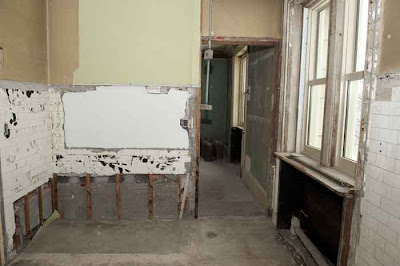 Above, remnants of another bathroom.
Above, remnants of another bathroom.
 Above... an original elevator that operated from the third floor to the attic... for hauling up of items for storage or furniture.... still works.
Above... an original elevator that operated from the third floor to the attic... for hauling up of items for storage or furniture.... still works. Above, the Carriage House in back with the servants quarters on the right. The William Chick Scarritt House can be seen behind the Carriage House... itself in the process of renovation.
Above, the Carriage House in back with the servants quarters on the right. The William Chick Scarritt House can be seen behind the Carriage House... itself in the process of renovation.







